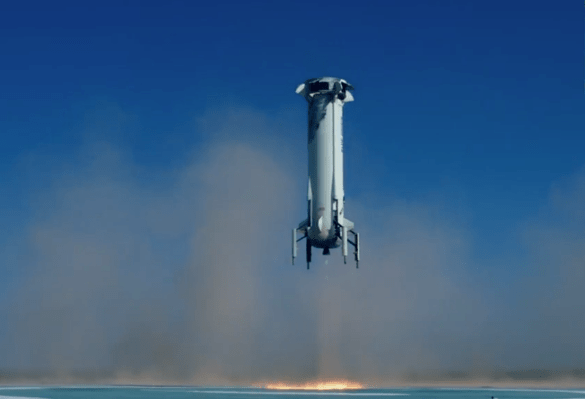Today, at its Texas launch facility, Blue Origin performed its most critical test to date. It performed a live separation test of its crew capsule from the rocket booster and everything performed as expected. The crew capsule fired its escape motor at the right time, sending the capsule higher than it ever has gone before. This successful test is a huge milestone for Jeff Bezos’ rocket company, which previously stated that if the test went well it could put the rocket company in position to become operational by the end of the year.
Today’s test was the ninth launch for Blue Origin and the third for the New Shepard rocket used in this test — more than 20,000 people tuned into Blue Origin’s YouTube live stream to watch the test. Both the capsule and booster are designed to be reused.
The duration of the launch lasts around two and half minutes, at which point the engine cuts off. The capsule is designed to coast into space, while the booster drops back down, kicking in the landing gear and rocket-powered breaking system to land on the ground, unscathed. The capsule, meanwhile, uses a trio of parachutes to coast back to Earth. From the looks of this morning’s video, things went precisely according to plan, with an ideal landing on both counts.
The entire mission took approximately 11 minutes to unfold, with the capsule hitting a maximum speed of 2,236 miles per hour and height of 389,846 feet.
For the sake of the test, a mannequin was placed inside the capsule that Blue Origin hopes will one day sport living, breathing astronauts. “[The mannequin] probably peaked at 10 Gs,” said Blue Origin’s Ariane Cornell, during the webcast. “But you know what? That is well within what humans can take, especially within such a short spurt of time and in those reclined seats. It’s just important that we bring the astronauts home safely.”
The company expects tests with a human crew could commence as early as the end of this year. No timeline has been set for commercial flights, however. “We can’t wait to take you guys to space one day,” Cornell added.
